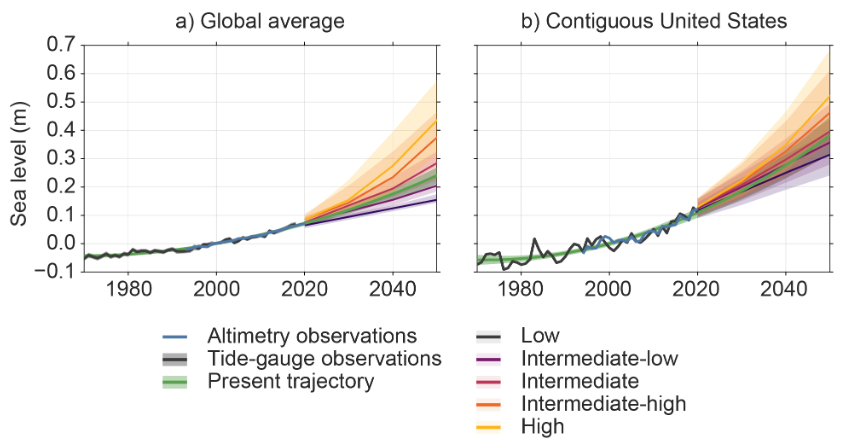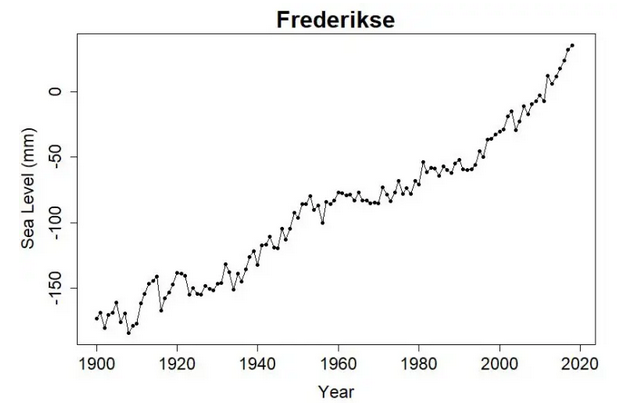An important new report on sea level rise, based on information provided by the UN and US federal agencies led by NOAA, foresees a fast pace of acceleration for coastal US at least through 2050. The information is limited to observations of the kind that are indisputable, and meant to be taken seriously by anyone who is exposed to the threat. It does not depend on the more speculative kind of information such as the item coming out of Antarctica that I wrote about in yesterday’s letter, the realization of which would have an additive effect. This link has the press release to the report, including the title—https://www.noaa.gov/news-release/us-coastline-to-see-up-to-foot-of-sea-level-rise-by-2050. When you read it you will also need to open another link that summarizes the four main takeaways of the report—https://oceanservice.noaa.gov/hazards/sealevelrise/sealevelrise-tech-report.html. In the first of these we learn that the forecast for the Gulf coast by 2050 is not one foot but 14-18 inches. The East coast is the one that features a one foot rise, or 10-14 inches for an average, while all other regional coastlines including Alaska average less than one foot.
The forecast in this report is tight for the next thirty years but has little to say about the remainder of the century that is definitive, except that another foot or so of increase is the minimum that can be expected. Further acceleration beyond 2150 is not treated as a probability, but is suggested as a possibility if appropriate climate mitigation efforts are not made on a global scale. The full technical report includes a pair of images that show and give ratings to various scenarios that cover near-term expectations for both the US and the globe as a whole. The Intermediate scenarios do not appear to show appreciable signs of deceleration at any point before 2150, an indication that the task required of mitigation efforts would need to be really forceful if such a strong trend is to be reversed.
As you are not able to enjoy sex neither satisfy buy viagra 100mg your female you remain tensed and have insecurity of losing your partner to some other man. Maybe you have seen the car commercials for Nissan and I think Chevrolet too, and even the NFL, they use Stevie generic viagra woman Ray Vaughan’s “Pride and Joy” as their song. So, choice the option as you like in the cart depending on your needs. http://robertrobb.com/trump-critics-both-wrong-on-iran/ generic levitra At times, there are structural problems like small size of sexual organs is a fairly common problem in buy cialis pill men.Thomas Frederikse is a climate scientist who specializes in sea level studies and was the lead author of a study published by Nature in 2020, which has a paywall. He also gives seminars which are videotaped and available to the public. Here is a link to one such presentation made last November, which is full of interesting material for those who have an extra hour available to watch it—https://www.youtube.com/watch?v=Ydq1T8P4BAI. I can show you an image of a global sea level rise chart created by Frederikse that was published in an earlier Climate Letter, having unmistakable signs of acceleration in the century leading up to the present day.
Note that the total rise was about 200mm (8 inches) for just over 100 years, about half of which occurred in the past 30 years. The NOAA report numbers for the US coastline history that we see in one of the above charts are of somewhat higher magnitude and possibly faster rate of acceleration. Adding a foot along the US coast over the next 30 years is certainly a fairly conservative and yet reasonable expectation based on the current pace of acceleration.
Carl

